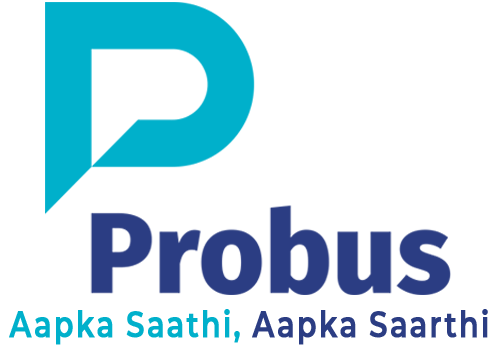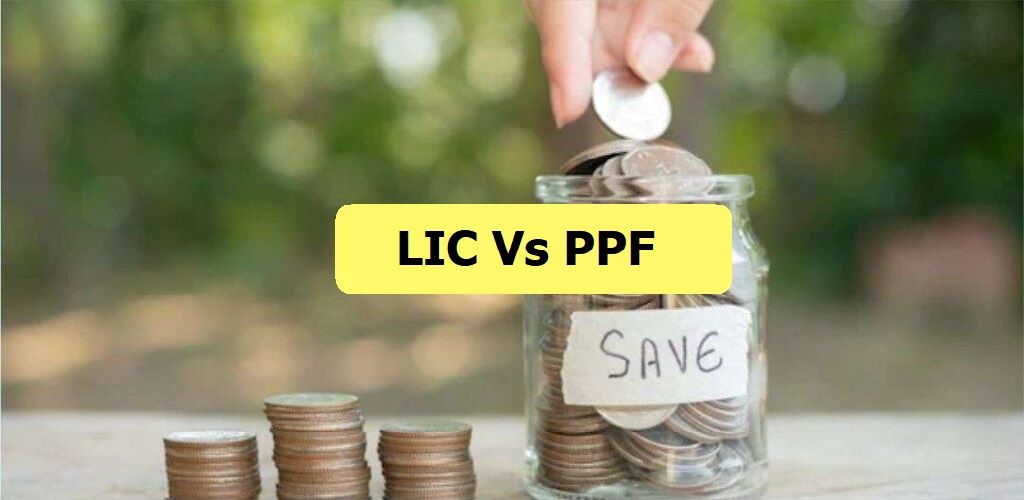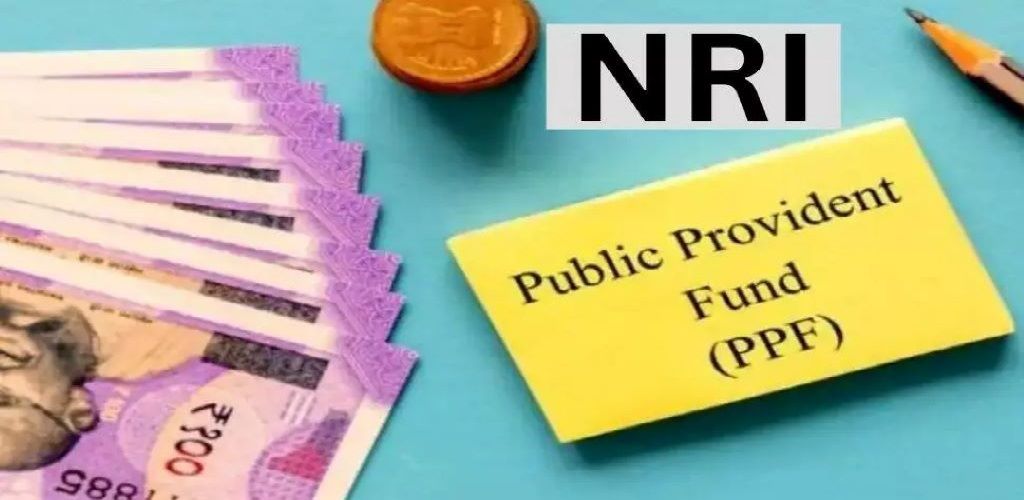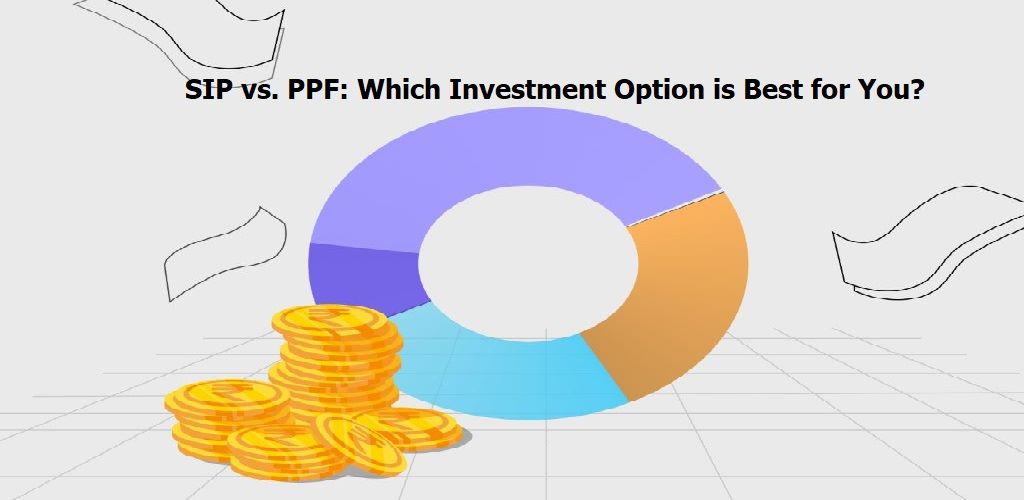Investing in a girl child’s future is one of the most crucial financial decisions a parent or guardian can make. In India, as the focus on women’s education and empowerment grows, many investment plans are specifically designed to secure a girl child’s financial well-being.
When your daughter is born, it’s essential to research and find the best investment plans that fit your current financial situation and future goals for her. These investment options help parents save and grow their wealth over time, ensuring that their daughter has a solid financial foundation to follow her dreams and ambitions. Choosing the right investment plan is vital to support her in achieving her goals.
In this post, we’ll discuss the top 9 investment plans for a girl child. But before that, let’s discuss the benefits of choosing investment plans for your girl child.
Reasons to Invest in Girl Child Investment Plans
Let’s take a quick look at the reasons for choosing investment plans for your girl child.
- Rising Education Costs
One of the biggest benefits of choosing an investment plan for your little daughter is that it may help pay off education expenses. Remember that education is the key to a successful future. With the consistent rise in education costs, early investments ensure you can provide your child with the best educational opportunities without compromising quality due to financial constraints.
- Financial Security
Another major reason to consider a girl child investment plan is that life is unpredictable. Ensuring financial security for your child in unforeseen circumstances is essential. Investment options with an insurance component act as a safety net, guaranteeing financial support during difficult times.
- Inflation Hedge
One of the key benefits of such a child investment is that it helps protect against inflation. Remember that inflation decreases the purchasing power of money over time. When you invest, you can combat inflation’s impact, which means that the funds you set aside today will be sufficient to meet your child’s future financial needs.
- Goal-Specific Planning
There is no denying that child investing helps you set and achieve specific financial goals for your child. Strategic planning ensures you have the funds to fulfil your educational, marriage, and other life dreams.
- Compounding Benefits
Last but not least, the earlier you start investing, the longer your money has to grow. Most investments leverage the power of compounding to amplify returns and provide exponential growth. Compounding reinvests your returns to create substantial wealth in the long run.
Top 9 Investment Plans for a Girl Child
Here is a list of the top 9 investment plans for a girl child, along with their meanings, eligibility, and key benefits.
Sukanya Samriddhi Yojana (SSY) is a special savings scheme provided by the government. It is specifically designed for parents who have a daughter. The main aim of this scheme is to encourage parents to save and invest money for their daughter’s future education and marriage. The government introduced the SSY scheme as a part of the Beti Bachao, Beti Padhao initiative, which focuses on promoting the welfare and education of girls in India. The Prime Minister of India announced this scheme in January 2015.
Key Features & Benefits:
These are as follows:
- Tax Benefits
The SSY scheme enjoys the Exempt, Exempt, Exempt (EEE) status under Section 80C of the Income Tax Act. This means that the contributions you make to this scheme (up to Rs 1.5 lakh per year) are eligible for tax deductions.
- Flexible Withdrawals
The SSY account allows partial withdrawals for specific needs, such as funding your daughter’s higher education. This ensures that the funds can be accessed when they are most needed.
- Account Transfer
You can easily transfer the SSY account from one authorized post office or bank to another. This feature provides flexibility if you need to move or change your banking preferences.
Eligibility Criteria:
| Parameters | Details |
| Age | Below 10 Years |
| Investment Amount | Minimum – Rs. 250; Maximum Rs. 1.5 lakh p.a. |
| Maturity Period | 21 Years |
ULIPs (Unit Linked Insurance Plans) are special financial tools that provide both life insurance and investment opportunities. They offer two main benefits: life cover and market-linked returns. As an investor, you can decide how your money is invested across different asset classes, based on your risk tolerance. This allows you to grow your wealth while ensuring financial protection. ULIPs are popular for long-term wealth creation, which makes them a great option for securing your child’s financial future.
Key Features & Benefits:
- Dual Benefits
The major benefit is that ULIPs offer the combined advantages of life insurance coverage and investment opportunities. This means that you not only secure your family’s financial future with life insurance, but you also have the potential to grow your wealth through market-linked investments.
- Investment Flexibility
ULIPs provide the flexibility to choose how your funds are invested. You can select the mode of investment that aligns with your financial goals and risk appetite. Whether you prefer a high-risk, high-return strategy with more equity exposure or a conservative approach with more debt instruments, ULIPs can accommodate your preferences.
- Long-Term Wealth Accumulation
One of the key benefits of ULIPs is their ability to help you accumulate wealth over the long term. By staying invested for an extended period, you can take advantage of the power of compounding, which can significantly boost your savings.
Eligibility:
| Parameters | Details |
| Age | 18 to 75 years |
| Lock-in Period | 5 Years |
| Tax Benefits | Yes |
The POTD is a fixed deposit scheme where you can invest your money for a set period. This period can range from one year to five years, allowing you to choose the duration that best fits your financial planning. POTD offers competitive interest rates, ensuring that your investment grows steadily over time. The interest rates are usually higher than those offered by regular savings accounts, which makes it a more lucrative option for long-term savings. Whether you are saving for her education, marriage, or other future needs, this scheme helps you build a substantial corpus over time with minimal risk.
Key Features & Benefits:
- Minimum Deposit Amount
The Post Office Term Deposit (POTD) requires a minimum deposit amount of INR 1000/-. Subsequent deposits must be made in multiples of INR 100. This ensures accessibility for investors with varying financial capacities, allowing them to start saving for their girl child’s future with a reasonable initial investment.
- Withdrawal Restrictions
No withdrawals are permitted before the expiry of six months from the date of deposit. This restriction encourages long-term savings discipline among investors. By refraining from premature withdrawals, investors can maximize the growth potential of their deposits and achieve their financial goals more effectively.
- Pledging or Transferring the POTD Account
Investors have the option to pledge or transfer their POTD account as security. To initiate this process, they must submit the prescribed application form to the concerned post office.
Eligibility Criteria:
| Parameters | Details |
| Age | Children above the age of 10 can apply. |
| Minimum Deposit | Rs 1000 in multiples of Rs 100 |
| Investment period | Ranging from 1 to 5 years |
The National Savings Certificate (NSC) is a special savings plan offered by the government, designed for minors. You can open an NSC account in your child’s name. In 2024, it offers an interest rate of 7.7% per year, but keep in mind that this rate might change over time. The minimum amount you can invest is Rs. 1000, and once you invest, your money is locked in for 5 years. NSC is a safe choice, especially for those who prefer low-risk investments. Plus, investing in NSC can help you save on taxes! The money you invest in NSC is eligible for a tax deduction of up to Rs. 1,50,000 as per the rules laid down by the government under Section 80C of the Income Tax Act, 1961. It’s a smart way to invest in your child’s future while also saving on taxes.
Key Features:
- Nomination Facility
Investors have the option to nominate a family member, including a minor, to inherit the National Savings Certificate (NSC) in the unfortunate event of the investor’s demise.
- Tax Implications
There is no Tax Deducted at Source (TDS) on NSC payouts. However, the subscriber should pay applicable taxes while filing income tax returns or paying advance tax.
- Maturity Benefits
Upon maturity, the investor receives the entire corpus value of the NSC, which includes the principal amount invested and the accumulated interest.
Eligibility Criteria:
| Parameters | Details |
| Who is eligible? |
|
| Deposit | Minimum Rs. 1000 and in multiple of Rs. 100, no maximum limit. |
| Maturity | The deposit shall mature after 5 years. |
5. CBSE Udaan Scheme
The CBSE Udaan Scheme, started by the Central Board of Secondary Education (CBSE), aims to provide academic support to girls from economically disadvantaged backgrounds. Through this scheme, female students receive free assistance to prepare for engineering entrance exams. They have access to various resources like virtual classes, tutorial videos, doubt clarification sessions, motivational talks, and study materials to help them excel in their studies. Additionally, eligible students may receive monetary support or tablets, along with orientation sessions.
Key Features & Benefits:
- Opportunity for Chosen Female Students
The Udaan scheme provides a unique opportunity for selected female students, with the current limit set by CBSE at 1000, to attend engineering entrance exams at no cost. This initiative aims to bridge the gap and empower young women from economically disadvantaged backgrounds to pursue higher education in engineering.
- Access to Study Material
One of the major benefits is that participants of the Udaan scheme will receive access to comprehensive study materials through an online portal. These materials include a wide range of resources and tutorials designed to assist students in their exam preparation journey.
- Virtual Classes
With approximately sixty centres established in major cities across India, the Udaan scheme offers virtual classes for students. These classes provide interactive learning experiences and guidance from experienced educators, enhancing students’ understanding and confidence in their subject matter.
Eligibility Criteria:
| Parameters | Details |
| Eligible Students | Only female students studying in Class 11th or Class 12th are eligible |
| Benefits |
|
| Mode of Application | Online through the CBSE Portal |
The Post Office Recurring Deposit is an investment plan where you deposit a set amount of money every month for a fixed period at a fixed interest rate. It’s offered by the Indian Postal Service to promote regular savings and provide a reliable option for securing your girl child’s financial future. This scheme lasts for 5 years, with an interest rate of 6.7% per year, and you can start with as little as Rs 100 per month. There’s no maximum limit on how much you can deposit, and you can easily transfer your account between post offices for added convenience.
Key Features & Benefits:
- Tenure
The tenure for a Post Office Recurring Deposit (RD) is fixed at 5 years. Once you open an RD account, your money is locked in for this duration, which allows it to grow steadily over time.
- Minimum Monthly Deposit
To open an RD account, you need to deposit a minimum amount of Rs. 100 every month. It ensures that you consistently contribute to your savings and benefit from the interest earned on your deposits.
- Penalty for Missed Deposits
If you miss depositing in any given month, a penalty of Rs. 1 will be charged for every Rs. 100 denomination of your RD account. It’s important to maintain regular deposits to avoid penalties and maximize the growth of your savings.
Eligibility Criteria:
| Parameters | Details |
| Eligible Individuals |
|
| Rate of Interest | 6.7% per annum |
| Minimum Amount | Minimum Rs. 100/- per month or multiples of Rs. 10/-. No maximum limit. |
7. Fixed deposit (FD)
A fixed deposit is a simple financial product where you deposit a certain amount of money with a bank or financial institution for a predetermined period, which can vary from a few months to several years. During this time, your deposited amount earns a fixed interest rate, ensuring steady growth of your savings. Once the deposit matures, which means the agreed-upon period ends, you receive back the principal amount you deposited along with the interest you earned. It’s a simple and secure way to grow your money while knowing exactly how much you’ll get back at the end of the term.
Key Features & Benefits:
- Tax Benefits for Small Deposit Holders
One of the major benefits of fixed deposits is that small deposit holders enjoy tax benefits with fixed deposits, as banks are not required to deduct tax until the interest earned crosses the specified threshold. This allows individuals to grow their savings without immediate tax implications, providing a favourable environment for financial growth.
- Flexible Tenure Options
With fixed deposits, depositors have the flexibility to choose the tenure of their investments. They can select the duration that best suits their financial goals, whether it’s a short-term deposit for a few months or a long-term investment spanning several years. Additionally, depositors have the option to extend or redeem their fixed deposits based on their changing financial needs and preferences.
- Easy Liquidity
Fixed deposits offer easy liquidity, which means depositors can easily access their funds when needed. Online options are available through net banking, providing convenient access to managing and liquidating fixed deposits from the comfort of your home.
Eligibility Criteria:
| Parameters | Details |
| Investment Tenure | Ranging from 7 Years to 10 Years |
| Withdrawals | Premature and partial withdrawals are allowed with penalties. |
| Maturity | Upon maturity, the maturity amount can be reinvested for continued growth |
8. Public Provident Fund (PPF)
The Public Provident Fund (PPF) stands out as a government-backed investment scheme ideal for securing a child’s future. With its interest rate declared quarterly, PPF offers higher returns compared to fixed deposits or savings accounts. Its extended lock-in period encourages disciplined savings, which makes it a fitting choice for long-term financial planning for children. By committing to the 15-year lock-in, PPF serves as an effective tool for parents to accumulate a significant corpus, catering to their child’s future needs with stability and reliability.
Key Features & Benefits:
- Low-Risk Investment
Public Provident Fund (PPF) is a low-risk investment option, offering guaranteed returns and is backed by the Indian government. This provides investors with confidence in the safety and stability of their investment and ensures peace of mind for long-term financial planning.
- Tax Benefit
Investors in PPF enjoy tax benefits, as the interest earned and maturity amount are both tax-free under section 80C of the Income Tax Act, 1961. This tax exemption enhances the overall returns on investment, which makes PPF an attractive choice for tax-efficient wealth accumulation.
- Partial Withdrawal
PPF offers the flexibility of partial withdrawal, which becomes available from the seventh financial year onwards.
Eligibility Criteria:
| Parameters | Details |
| Age | There is no age limit for opening a Public Provident Fund (PPF) account in India, and both adults and children can be eligible |
| Investment Limit | Minimum Rs 500 Maximum Rs 1.5 lakh per year |
| Deposit Frequency | At least one deposit per year for 15 years |
| Mode of Deposit | Cash, Cheque, online transfer |
9. Children Gift Mutual Fund
Child Mutual Fund is a specialized investment scheme designed to cater to various life events of a child, including marriage, higher education, and more. It offers flexibility and diversification through two main categories: debt-oriented and equity-oriented hybrid mutual funds. In the hybrid equity mutual fund, over 60% of the investment is allocated to equity, while in the hybrid debt mutual fund, over 60% is allocated to debt funds. Parents or guardians have the option to invest in these mutual fund schemes in the name of the minor child, which provides a structured and potentially lucrative way to save and invest for their child’s future needs.
Key Features & Benefits:
- Long-Term Savings Opportunity
The Child Mutual Fund offers a platform for long-term savings, which allows investments to grow over time and potentially yield higher returns. This extended investment horizon aligns with the long-term financial goals associated with a child’s future needs, such as education and marriage expenses.
- Professional Fund Management
Managed by experienced investment professionals, the Child Mutual Fund ensures that investment decisions are made adeptly on behalf of the investors. These professionals utilize their expertise and market knowledge to optimize the fund’s performance and navigate through various market conditions, which provide investors with a reliable avenue for wealth accumulation.
- Diversified Portfolio
The Child Mutual Fund invests across a wide range of assets, including stocks, bonds, and other securities, thereby spreading the risk across different sectors and markets.
Eligibility Criteria:
| Parameters | Details |
| Age | Investments in these funds can be made only in the name of the minor child. |
| Lock in | For a period of at least 5 years or until the child reaches 18 years of age, whichever comes first. |
| Minimum Amount | Minimum Rs. 100 |
Conclusion
So, there you have it! That’s wrap to the top 9 investment plans for a girl child. Investing in financial instruments for children is a crucial step towards securing their future, ensuring they can lead a peaceful life without any financial constraints. However, selecting the right investment product requires careful consideration of several factors, including your financial needs, affordability, risk tolerance, and the investment’s term. Conduct market research and then make the right choice for your girl child.
Frequently Asked Questions
Listed below are the frequently asked questions related to the girl child investment plans.
It’s smart to start investing for your girl child’s future early on, even from birth. Being consistent and disciplined with your investments helps build a substantial fund for her future needs over time.
Whether you can get a loan against your child’s investment plan depends on the specific plan you choose. It varies from plan to plan, so it’s essential to check the details.
Yes, you can withdraw funds from a child investment plan after the lock-in period ends. This gives you flexibility if you need to access the money for any reason.
Yes, SSY is a great low-risk investment option for securing your daughter’s future, especially if you have a girl child. However, it’s not the only option available. General mutual funds can offer higher returns but come with higher risk.
PPF offers more flexibility, while SSY provides higher returns. Depending on your preferences and financial goals, you can consider investing in both if you have surplus funds. Risk appetite doesn’t play a role here, so it’s about finding the right balance for your needs.







